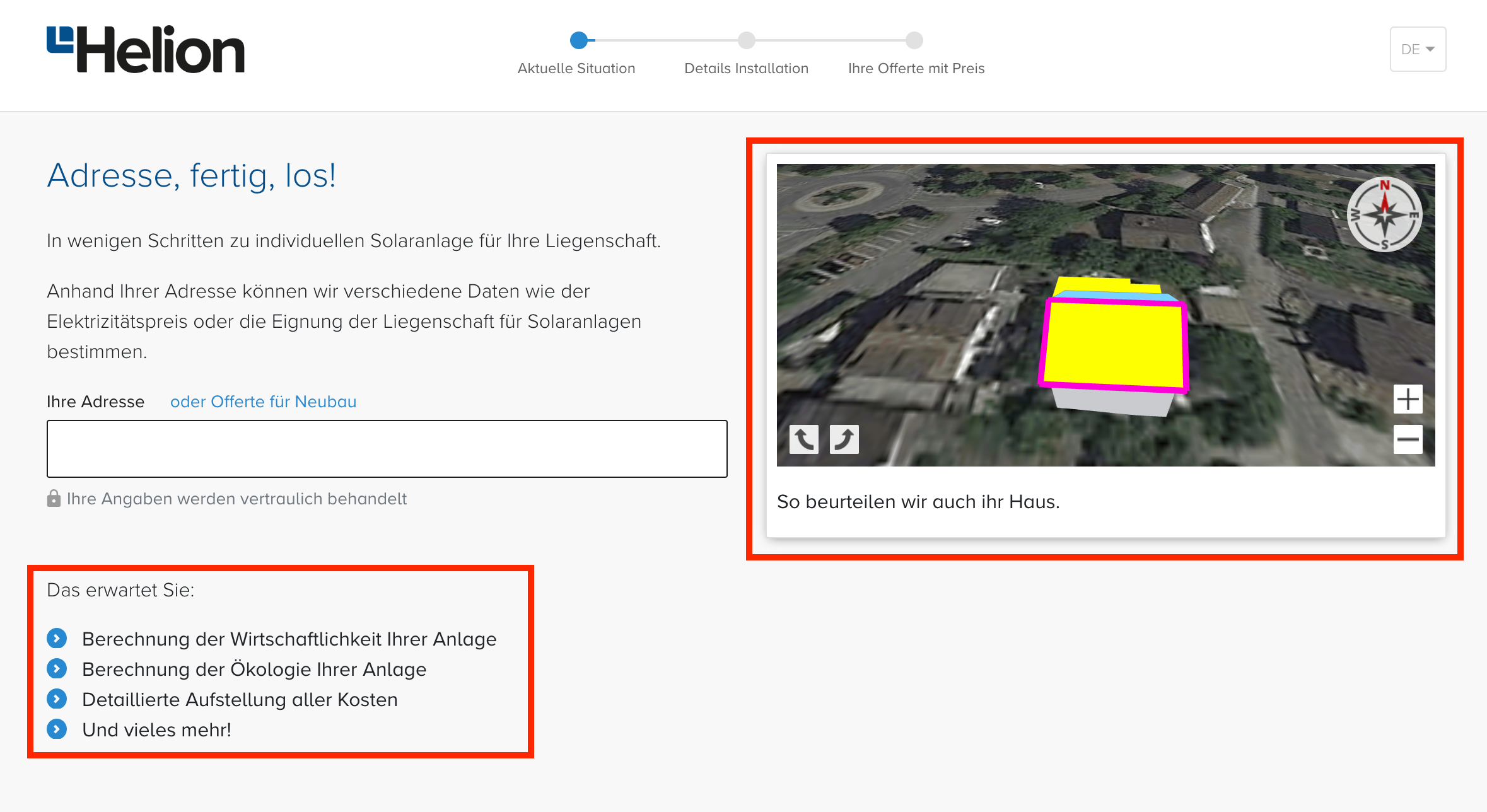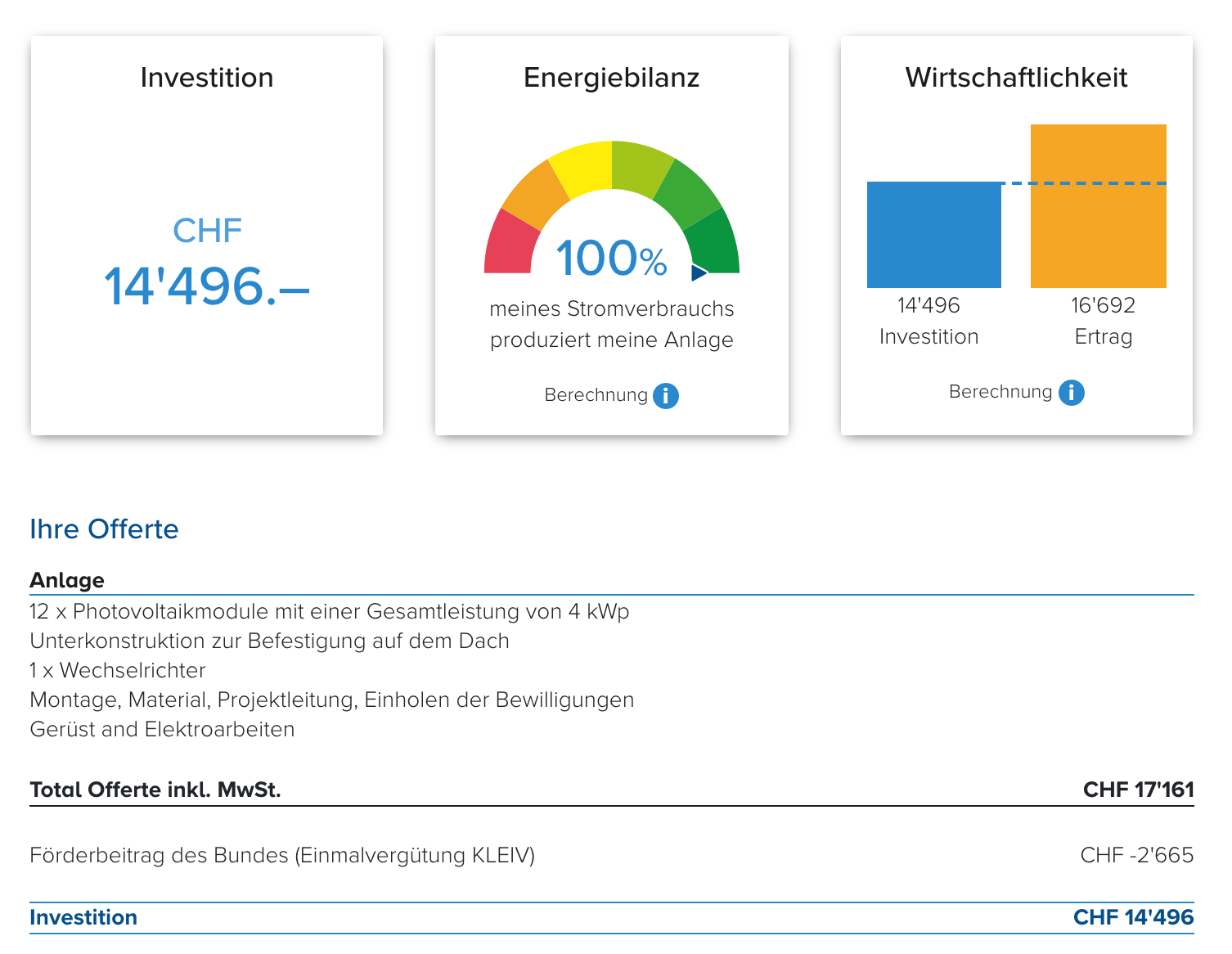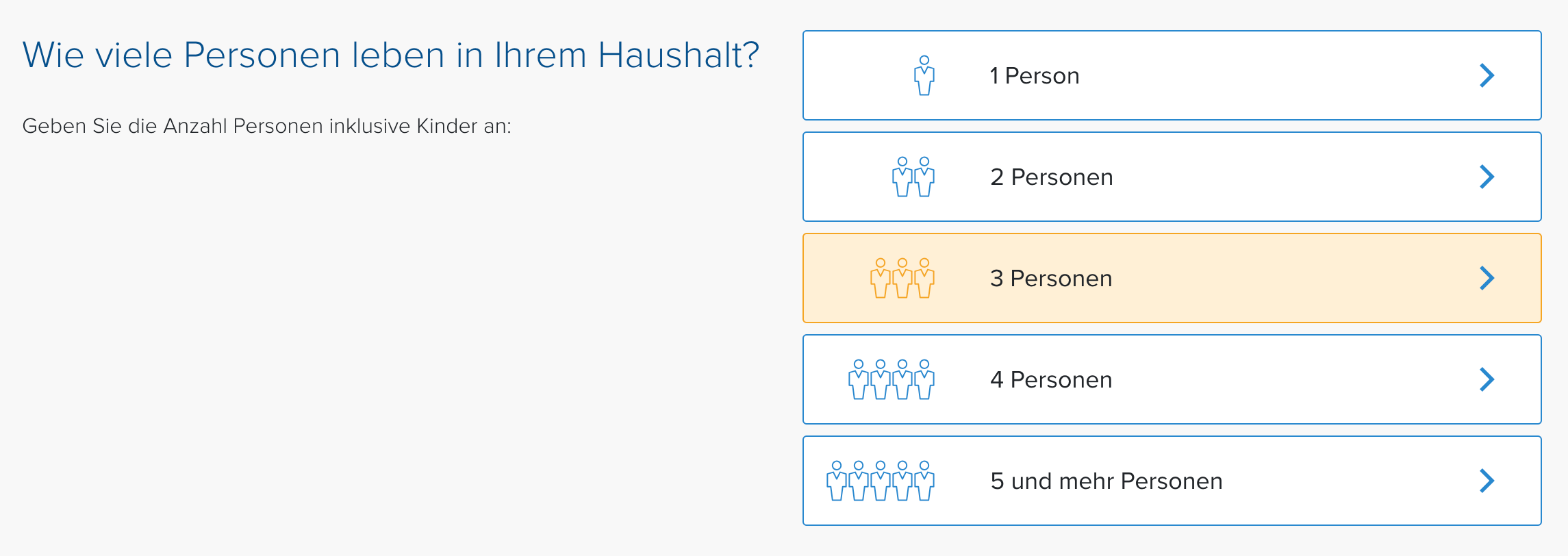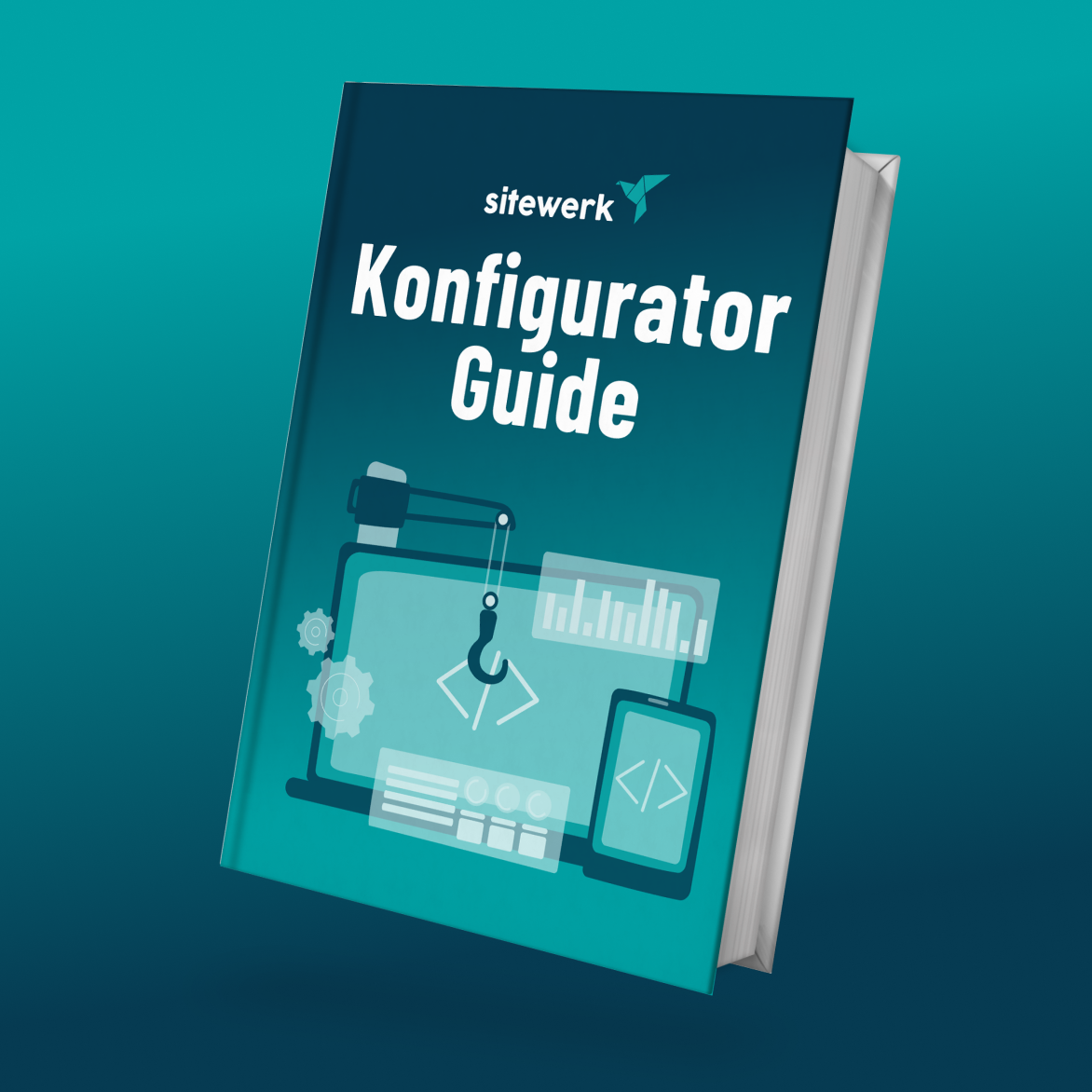Increase The Conversion Rate with Smart Configurators
With these 10 measures and a configurator, Helion's lead conversion rate went through the roof
No matter which sales process it is, the ultimate goal is to achieve the highest possible conversion rate, which defines the percentage of all visitors who complete the desired process. The following article shows how we were able to increase the conversion rate by a whopping 40% with the help of clever user-centered design and our PV configurator.
Increase conversion rate with the help of configurators
Leads are advertised expensively on Google or Facebook. In order for these investments to be worthwhile, it is important to keep the bounce rate as low as possible. The goal is therefore to keep the conversion rate high, which defines the percentage of all visitors who complete the desired process.
With our solar calculator resp. our product configurator for PV systems pursues exactly this goal: The user is offered a service, for example in the form of planning and price, and in return you receive the relevant contact details from the user through clever queries.
Based on the development of the Helion solar calculator from the 1st to the 4th version, it is illustrated how the conversion rate could be increased from 23% to 32% (increase of 40%) with the help of a conversion-driven design approach.
1. Value proposition as a motivation for the customer
In order to persuade visitors to the website and thus potential customers to start the computer, they must be shown what benefits the process will bring to them. The value proposition should refer to the possible intentions of the targeted target groups. The Helion solar calculator deals with both the economic and the ecological components of purchasing a solar system. These two components cover the two target groups, buyers with ecological thoughts and buyers with economic ulterior motives. By clearly demonstrating the value proposition, each target group now finds motivation to take the first step - namely entering the address.

2. Delivering on the value proposition
It is of the utmost importance to deliver the benefits promised at the beginning of the configurator at the end of the process and to keep the customer satisfied. Even shortly before the end of the process, customers can still be lost through empty promises. In the case of our solar calculator, the potential customer receives information about the investment, energy balance and profitability at the end.

3. Divide the contact form into several «bits».
It is obvious that visitors are reluctant to enter their personal data such as address and telephone number on the web. As a result, querying such data often provokes jumps. This should be minimized by cleverly structuring the contact form.
By querying all personal data in one form, the user is given the feeling of data collection down to the smallest detail. By splitting up the contact form, the inhibition threshold for the transmission of personal data can be lowered step by step.
In the first step, you will be asked for your residential address. The user is often hesitant. However, in the case of the offer calculator, it seems logical to state your address, since this is indispensable for determining the 3D data of your building. As an intermediate step, you will be asked for the email shortly before the end of the computer. This information is usually not a problem. In the last step, before the detailed offer is presented, the user is asked to enter his contact details. Since the user has already transmitted a large part of his personal data by entering his address and email, other details such as gender, name and telephone number are now less important and are therefore a smaller hurdle on the way to a recommended price offer.

4. Creating trust through data protection
The information on handling and protecting user data is intended to create trust. This is done using icons such as SSL or a lock together with the sentence “Your information will be treated confidentially”. With a detailed data protection declaration, the user can, if necessary, find out more about why their data is required and what happens to it after it has been entered.

5. Mobile First Design Approach
Whether it's on the train, at the bus stop or at home on the sofa, it doesn' matter whether it's the new wardrobe, the long-awaited dream car or the ecologically and economically attractive solar system. Today's customer gathers information online and buys online whenever possible on mobile devices. Since well over half of all users access the configurator via mobile device, it must run perfectly and be easy to use, especially in the mobile version. With the solar calculator, we went so far that we opted for a mobile-first approach, which means that during development, display on mobile devices is prioritized.

6. The call-to-action button must always be visible
With different browsers and window sizes, it is important to ensure that the call-to-action button (e.g. the “Next” button in this step – see photo below) is visible regardless of the view port size and is not reached by scrolling or searching must become. It should also be noted that the desired “Next“ button is highlighted more clearly than the “Back“ arrow, as this is intended to attract the user's attention.

7. No questions to which the user does not know the answer immediately and without research
If the user cannot answer a question or has to search for the answer, this leads to a higher bounce rate. For example, when asking about electricity consumption, we don't ask: «How high is your electricity consumption?». No customer would know that off the cuff without tedious research. With an easy-to-answer question like «How many people live in your household?» additional effort can be saved for the customer. The power consumption of the household is then estimated based on past experience.

8. Use default values
By using experience and standard values, it can be achieved that even difficult questions can be asked within a configurator without increasing the risk of the customer jumping off. With a standard value based on the customer's configuration and empirical values, the configurator will ultimately deliver a meaningful result without the customer having to answer the difficult question or even having to invest additional effort. In our example, we define the optimal size of the PV system using the roof area and estimated power consumption.
For particularly tricky questions, the system should display a suggestion or a default value.

9. Use meaningful images and icons
The use of images and icons can often make it easier for the user to find an answer. For example, anyone can see whether the fuse box has round or flat switches without having to know their exact designation. If you instead ask for a new or old fuse box, many people don't know where the boundary between new and old is defined, and they therefore give up the computer.
Choose meaningful photos and icons that make it easier to answer the questions.

10. Constant analysis, monitoring and improvement
Drop-outs can only be found and the configurator constantly optimized with targeted and meticulous analysis and monitoring. Tools such as «Google Analytics» or «Hotjar» help with this, with which the behavior of each visitor can be precisely tracked. How the mouse is moved, how much time a step takes or where the process is aborted. A/B tests serve as an additional tool. This allows changes to be checked for their user-friendliness and efficiency.
A/B testing
In an A/B test, visitors to the configurator are divided into two groups, one sees the original version, the other the modified or optimized version. By comparing the conversion rate, the benefit of the change can be quantified.
Conclusion
With a well-planned, constantly analyzed and improved process, an offer calculator can be developed into an efficient sales tool. By increasing the conversion rate and reducing the bounce rate at the same time, more customer contacts are gained and the investment is made worthwhile.

Create a 100% Digital Sales Process with 35% Less Cost of Sales with Configurators!
Have you already thought about using configurators? But don't know how to start... Then download our free guide and learn important key questions from practice.

Configurators as an effective tool for digitization, automation and optimization
In this article we present the various areas of application for online configurators. We explain which problems you can solve, what the advantages and goals are in the respective area of application and how your company and your customers can benefit from them.